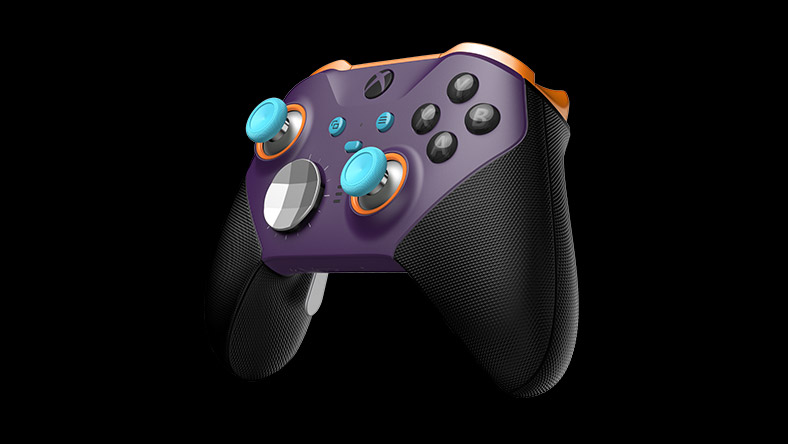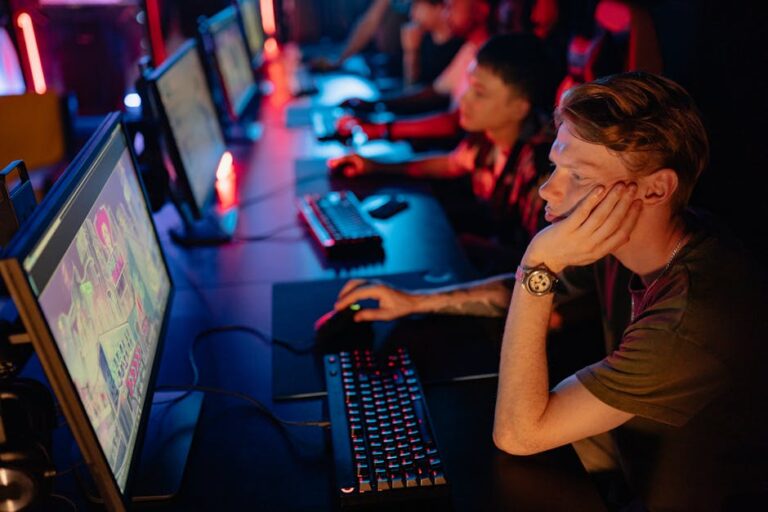The Arms Race in Your Hands: Redefining Performance in Competitive Gaming
In the ever-evolving landscape of Esports News and Competitive Gaming, victory is often measured in milliseconds. While raw skill, strategy, and teamwork remain paramount, the physical tools a player wields have become a critical, and often debated, part of the performance equation. For years, the PC Gaming community has obsessed over the minutiae of their peripherals—the DPI of a gaming mouse, the actuation point of a mechanical keyboard, and the refresh rate of a gaming monitor. Now, that same level of granular focus has firmly taken root in the world of Console Gaming. The standard-issue controller, once a universal symbol of console play, is being supplanted by a new class of elite, pro-grade hardware designed for one purpose: to provide a tangible competitive advantage. This shift represents more than just a new product category; it signifies a fundamental change in how we approach high-level play on platforms like PlayStation and Xbox, blurring the lines between casual entertainment and serious sport. This article delves into the technology, impact, and considerations behind the rise of professional game controllers.
From Standard Issue to Specialized Weapon: The Anatomy of a Pro Controller
For decades, the controllers bundled with consoles set the standard. They were designed for accessibility, durability, and general-purpose use across a wide variety of Video Games, from sprawling RPG Games to family-friendly platformers. However, as esports exploded and games like Call of Duty News, Apex Legends News, and Fortnite News demanded faster reflexes and more complex inputs, a gap emerged between what the standard controller offered and what competitive players needed. This gap gave rise to the “pro” controller, a category of Gaming Peripherals engineered with performance-enhancing features that go far beyond the basics.
Key Differentiators from Stock Controllers
Understanding what sets an elite controller apart is crucial. It’s not just about aesthetics or a higher price tag; it’s about a suite of features designed to optimize player input and response time. These core innovations include:
- Rear Paddles/Buttons: Arguably the most significant innovation, these extra inputs are located on the back of the controller grips. They allow players to map crucial actions—like jump, crouch, slide, or reload in FPS Games—to their middle or ring fingers. This is a game-changer, as it means a player never has to take their right thumb off the analog stick (which controls aim) to press a face button. The ability to aim and perform other actions simultaneously provides a massive advantage in fast-paced encounters.
- Trigger Stops and Hair-Trigger Locks: In shooters, the speed at which you can fire your weapon is critical. Standard triggers have a full range of motion. Trigger stops are physical mechanisms that dramatically shorten this travel distance. A player can fire their weapon with a much shorter, quicker press, enabling faster semi-automatic firing and reducing the time from decision to action.
- Swappable Components and Modularity: Elite controllers often feature magnetic, interchangeable parts. Players can swap out thumbsticks of different heights (concave or convex tops) to find the perfect level of control and comfort for their grip style. Some even allow for swapping the position of the D-pad and left analog stick, catering to different ergonomic preferences. This level of customization is a hallmark of high-end Gaming Hardware.
- Advanced Software Customization: Beyond physical mods, pro controllers are typically supported by robust software (on PC or console) that allows for deep customization. This includes remapping any button, adjusting thumbstick sensitivity curves to fine-tune aiming response, controlling vibration intensity, and creating multiple profiles for different Game Releases or character classes.
A Technical Deep Dive: The Milliseconds That Matter

To truly appreciate the impact of these controllers, we must look at the underlying Gaming Tech. The difference between winning and losing a gunfight in a game like Valorant News or Counter-Strike News can come down to fractions of a second, and every component in the input chain plays a role. Pro controllers are engineered to minimize latency and maximize precision at every step.
Input Latency and Connection Fidelity
While many casual players enjoy the freedom of wireless play, competitive gamers have historically favored wired connections to eliminate potential input lag and signal interference. Modern pro controllers address this in two ways. First, they offer premium, low-latency 2.4GHz wireless connections that are virtually indistinguishable from wired performance in most scenarios. Second, they always provide a robust, wired connection option for tournament settings where every millisecond and ounce of reliability counts. This focus on minimizing latency extends to the internal components, with higher polling rates ensuring the controller’s status is reported to the console or PC more frequently, resulting in a smoother, more responsive feel.
Mechanical Superiority: From Membrane to Mecha-Tactile
The feel and responsiveness of a button press can have a surprising impact on gameplay. Standard controllers typically use rubber membrane domes under their buttons, which can feel soft or “mushy” and have a longer travel distance. Drawing inspiration from the world of Gaming Keyboards, many pro controllers now incorporate mechanical or “mecha-tactile” switches for their face buttons, D-pad, and sometimes even triggers. These switches provide a distinct, satisfying click, similar to a high-quality Gaming Mouse. More importantly, they offer a much shorter actuation point and a faster reset, allowing for quicker repeated inputs—a clear benefit in fighting games or MOBAs like League of Legends News or Dota 2 News where rapid ability casting is key.
Real-World Scenario: The Battle Royale Clutch
Imagine a late-game scenario in a Battle Royale like Apex Legends. You’re in a close-quarters fight. With a standard controller, to jump over an obstacle while shooting, you must move your right thumb from the aim stick to the ‘A’ or ‘X’ button, creating a brief moment where you cannot adjust your aim. An opponent can exploit this micro-second of vulnerability. With a pro controller, you have the jump action mapped to a rear paddle. You can seamlessly leap over the cover, keeping your thumb firmly on the stick to track and fire at your opponent throughout the entire aerial maneuver. This is not a theoretical advantage; it’s a practical, repeatable technique that elite players use to win engagements.
The Ripple Effect: Impact on the Gaming Industry and Community

The proliferation of high-performance controllers has sent ripples throughout the Gaming Industry. It reflects the increasing seriousness of console esports and the growing demand from a dedicated player base for tools that match their commitment. This trend has several significant implications for players, developers, and the market itself.
Accessibility vs. The “Pay-to-Win” Debate
One of the most heated discussions within the Gaming Community is whether these expensive peripherals create a “pay-to-win” hardware gap. A pro controller can cost two to three times as much as a standard one, creating a potential barrier to entry for aspiring competitors. While it’s undeniable that these devices offer performance benefits, the consensus remains that they are enhancers, not substitutes, for skill. A highly skilled player with a standard controller will still outperform an average player with an elite one. However, at the highest echelons of play, where player skill is nearly equal, the hardware can absolutely be the deciding factor. This has led to tournament organizers creating specific rules around controller modifications and third-party hardware to ensure a level playing field.
Influence on Game Design and Development
As advanced controllers become more common, Game Development teams are taking notice. While developers using engines like Unity News or Unreal Engine News still design their core control schemes around the standard controller to ensure accessibility for the largest audience, they are increasingly aware of the complex inputs high-level players can perform. This can influence the design of movement mechanics, ability casting, and the overall skill ceiling in new AAA Games. The existence of paddles and extra buttons allows for more complex control schemes without resorting to awkward “claw” grips, potentially enabling more intricate gameplay possibilities in future Game Releases.

Choosing Your Weapon: Is a Pro Controller Right for You?
With a growing market of options, deciding whether to invest in a pro controller can be daunting. It’s not a necessary purchase for every gamer, but for those serious about improving their performance in competitive titles, it can be a worthwhile upgrade.
Best Practices and Key Considerations
- Analyze Your Genre: The benefits of a pro controller are most pronounced in fast-paced, competitive genres. Players of FPS Games, Battle Royale titles, and competitive fighting games will see the most significant improvement. If you primarily play single-player RPG Games, Strategy Games, or Indie Games, the advantages are less pronounced, and the cost may not be justified.
- Prioritize Features That Matter: Don’t be swayed by marketing alone. The most impactful features are typically the rear paddles and trigger stops. Modularity and aesthetic customization are nice-to-haves but secondary to core performance enhancements.
- Ergonomics are King: A controller is an extension of your hands. No matter how many features it has, if it isn’t comfortable for you to hold for extended gaming sessions, it’s the wrong choice. Consider the weight, grip texture, and overall shape. Just as with Gaming Chairs or Gaming Headsets, comfort is critical for endurance.
- Embrace the Learning Curve: Using rear paddles for the first time feels unnatural. It requires consciously retraining your muscle memory. Be prepared for an adjustment period of several days or even weeks before the new input method feels intuitive and you begin to see the performance benefits.
Conclusion: The New Standard for Serious Play
The rise of the pro-grade game controller is a definitive chapter in the ongoing story of Gaming History. It marks the maturation of the console ecosystem, bringing it in line with the hardware-centric culture of PC Gaming. These advanced Gaming Peripherals are far more than luxury items; they are specialized tools engineered to close the gap between player intention and in-game action. By offering enhanced customization, superior ergonomics, and faster inputs through features like rear paddles and mecha-tactile buttons, they provide a measurable edge in the highly competitive arenas of modern esports. While they will never replace foundational skill, they have become an essential part of the modern competitive player’s arsenal, fundamentally changing the expectations for performance and proving that in the world of esports, the battle is won not just on the screen, but in the palm of your hands.








